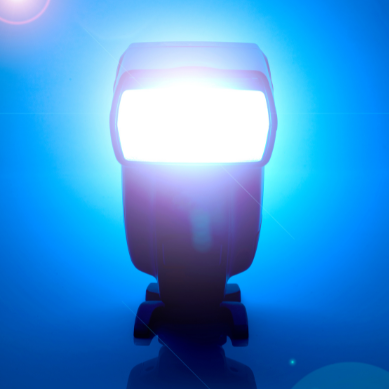
Flash, first introduced in 1839, was used by Frenchmen to take fossil photos.
Over the next 50 years, people developed new methods to set themselves on fire using limelight, including magnesium.
In 1887, Germans Adolf Miethe and Johannes Gaedicke invented a powdery substance similar to lightning flash explosive powder.
Since then, various artificial light sources have evolved, including flash lamps, guns, and electronic
flashes. While modern flashes are exciting, vintage flashes still hold significant value in the photography world.

It's important to note that Flash photography is a fascinating and often indispensable area of
photography, enabling you to take outstanding pictures in almost any lighting condition.
Whether indoors or outdoors in low-light conditions, the correct use of a flash can make all
the difference.
TTL (Through The Lens) is a technique that allows a camera to automatically measure and
adjust the flash's exposition, making it useful when lighting conditions change.
This allows the camera to focus on the subject without constant manual adjustment of the flash's power.
The number guide is a crucial quality criterion for flashes, indicating the maximum
sensitivity for an opening and an ISO setting (ISO controls the amount of light your camera
lets in, and therefore how dark or light your photos will be) .
For example, a flash with a 56-number guide can effectively illuminate a 10 meter subject
with a f/5.6 aperture. However, if the diaphragm is opened to f/4, the sensitivity is typically 100.


For professional flash heads, the flash's power is measured in watts-seconds (Ws), which
describes the amount of energy a flash can deliver in a second.
A 500 Ws flash can convert 500 watts of electricity into light in a second, allowing for greater light coverage or smaller apertures.
Modern flashes often allow manual power control, allowing for better control over the light reaching the subject

Exposure Time: Balances ambient and flash light. Use HSS for short exposures or lengthen the time for motion effects.
Aperture: Controls light and depth. Adjust flash power accordingly.
ISO Sensitivity: Keep it low for quality, or raise it in dim conditions to avoid overly dark shots.
White Balance: Optimize color tones before shooting for better results.
Shutter Curtain Sync: Synchronize flash with the first or second curtain for creative motion effects.
What types of flash ?
There are essentially three main types of flash, which can be used according to need and
situation.

All in all, the flash in photography is much more than just a lighting tool. When it's mastered,
it can enhance a scene, add depth and capture details invisible to the naked eye.
Whether it's to freeze a moment in the dark or create a creative play of light, flash opens up infinite
possibilities for photographers, amateur and professional alike.
By mastering it, everyone can reveal a new dimension to their art.